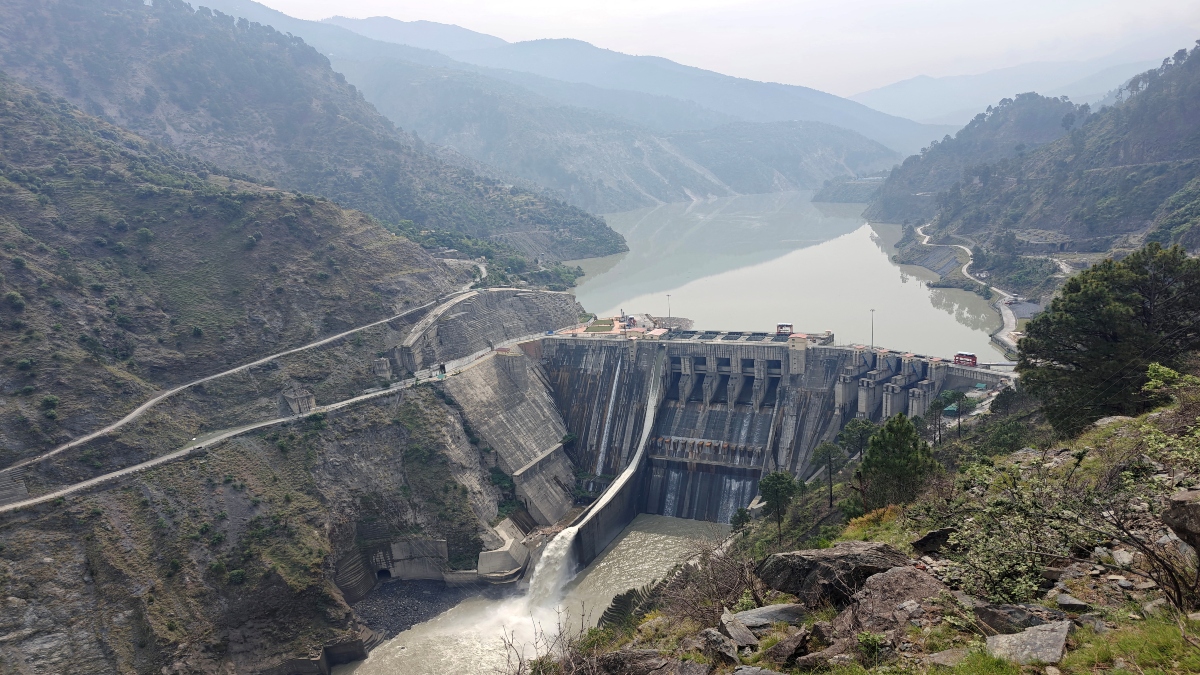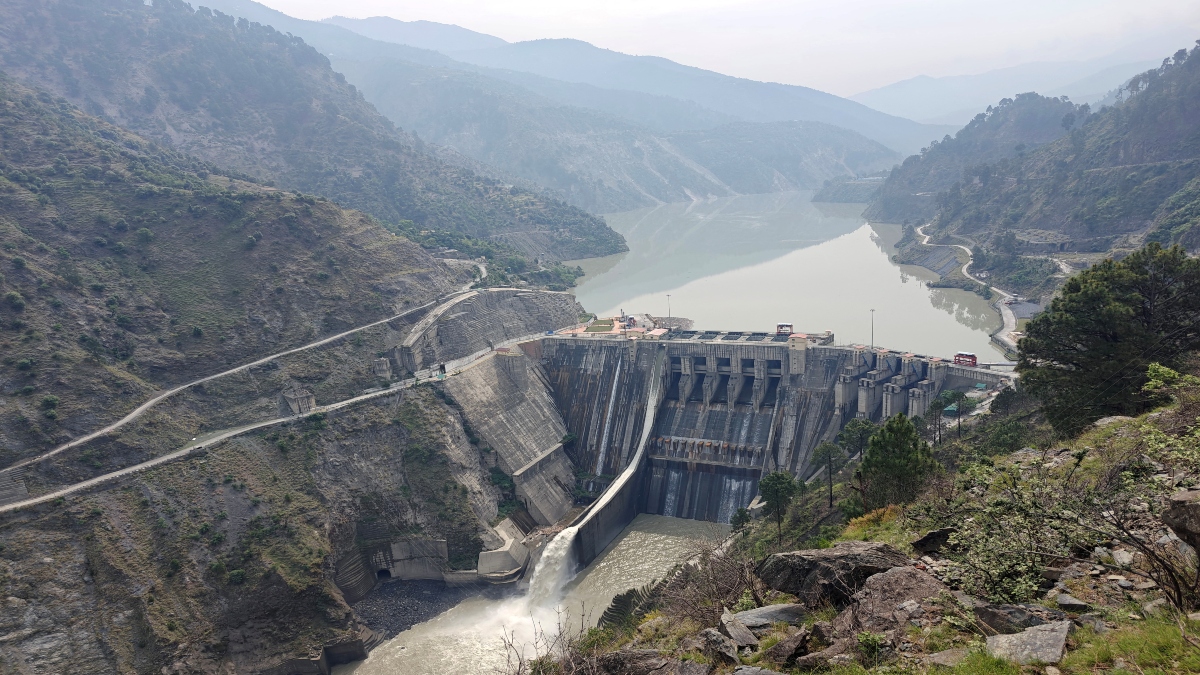Since the Pahalgam attack, Pakistan has conducted missile tests, naval and aerial drills, emptied terrorist facilities in bordering areas, ramped up nuclear weapons’ rhetoric, and mounted a disinformation campaign.
The missile tests and naval drills kept any Indian naval operation at bay. The constant rhetoric of an “imminent” attack ensured that no Indian attack took place — India would not attack in the time chosen by Pakistan.
Pakistan’s actions suggest that the military-intelligence establishment had wargamed the response to the Pahalgam attack well in advance and preparations for the response must have started right after the India-Pakistan confrontation in 2019 after the Pulwama attack, says Yusuf Unjhawala, a scholar of geopolitics at the Takshashila Institution.
ALSO READ: As India vows response to Pahalgam, why is Pakistan itching for war?
While drivers for the Pahalgam attack, which could not have taken place without the go-ahead from Pakistani Army chief General Asim Munir, are entirely domestic, such as restoring the primacy of the Pakistani military, there is an external element that could be the decisive factor in any India-Pakistan confrontation. That factor is China.
Pakistan wargamed response to Pahalgam attack well in advance
Everything that Pakistan has done so far after the Pahalgam attack is part of a calculated, pre-decided plan.
For instance, daily cross-border firing is not merely military aggression that is a result of Pakistan’s decision to up the ante with India, but it is an effort to prevent any cross-border action from India, such as the one in 2016 in response to the Uri attack.
“If the entire border is lit up, as it is since the Pahalgam attack, a cross-border action would be highly unlikely. Similarly, Pakistan’s military drills that extended almost to the edge of India’s exclusive economic zone (EEZ) put a check on Indian naval activities,” says Unjhawala.
Moreover, Indian intelligence has assessed that Pakistan has emptied camps and launchpads in Pakistan Occupied Jammu and Kashmir (POJK) in an apparent effort to prevent India from carrying out any targeted strikes.
While it is natural for countries to hold military drills and weapons demonstrations in times of tensions, the kind of drills that Pakistan is holding are intended to deter an attack from India and convey preparedness for any confrontation.
The Hatf-II missile has a range of 450 kilometres and the test-launch was conducted in the east-west direction, telling India that the mainland is within reach. The Fatah missile has a range of 120 kms. Pakistan has also unveiled the long-range ground surveillance radar AM-3505, which is supposed to monitor Indian military activity on land and in the air. It is aimed at monitoring Indian military activity across land and air up to 350 kms away on ground and 60,000 feet in the sky.
Unjhawala tells Firstpost, “Everything that we have seen so far suggests that, after the Pulwama-Balakot episode, Pakistan had wargamed how it would respond the next time a major terrorist attack would be carried out inside India. Pakistan is now following that plan to deter or at least delay an Indian response and internationalise the issue in an attempt to blunt any Indian response.”
Will China come to Pakistan’s aid?
For years, India has been preparing for what has been called a ‘two-front’ situation in which India faces confrontations with Pakistan and China at the same time.
Pakistan would want China to get involved in the conflict, but that is not certain despite the two countries being iron brothers.
“Pakistan would want China to get involved, but China’s involvement would depend on the fact whether it approved or sanctioned the Pahalgam attack,” says Unjhawala.
It is understood that India does not wish to enter into a full-scale war with Pakistan because of the possibility of China indirectly entering the war on Pakistan’s side. While military planners have long been concerned about scenarios in which India’s borders with both Pakistan and China might see simultaneous battles, China may not need to open a second front at all. China may rather fight India via Pakistan.
“China would fight India to the last Pakistani. Nothing would suit China more than an India-Pakistan war. China would bankroll Pakistan’s war on India if it concludes that the war would harm India substantially — and it will harm India substantially. China’s principal aim with India is to bog down the country and subdue it. China wants to prevent India from emerging as a power in the region. The India-Pakistan war would provide the best opportunity. That’s why India has to avoid a full-scale war,” says Unjhawala.
ALSO READ: How Modi govt avoided China’s strategic ambush by delaying kinetic action against Pakistan
For China, the stakes are much higher than Pakistan. For years, India and others had been chipping away at manufacturing concentrated in China. India’s production-linked incentive (PLI) schemes have ramped up manufacturing in some sectors like mobile phones.
Recently, plans of Apple to shift manufacturing of iPhones for the United States to India from China had surfaced. Along with like-minded countries, India had also been tackling Chinese hegemonic designs in the Indo-Pacific and checking its influence in the Global South.
With a war-ravaged economy, however, India would neither be able to attract investments for manufacturing nor check Chinese advances in the world. For China, an India-Pakistan war would be a chance it would not want to miss.
But Pakistan didn’t wargame one thing
While Pakistan appears to have planned how to manage India after the Pahalgam attack, it appears that the wargame skipped one element: the suspension of the Indus Waters Treaty.
Even though Prime Minister Narendra Modi told the world in an extremely rare speech in English that India would pursue terrorists and their backers “to the ends of the Earth”, Pakistan’s rhetoric barely mentioned it. What really rattled Pakistan was the suspension of the Indus treaty — Pakistan called it “an act of war”.
Pakistan has valid reasons to be rattled. Around four-fifths of the nation’s agriculture and one-third of its hydropower depend on the Indus river system. Moreover, agriculture accounts for one-fourths of its economy.
While India cannot stop the Indus river system’s waters from flowing into Pakistan, it can tamper with the flow that can affect the availability of water for agriculture, hydropower generation, and other purposes at times of high requirement, such as in summers, according to Prof Medha Bisht, a scholar of water governance and transboundary issues in the subcontinent at the South Asia University, Delhi.
Now that the Indus treaty is in abeyance, India is no longer obliged to share information related to the release or restriction of waters and that gives India the ability to induce water-scarcity or floods in Pakistan with sudden release of water or reduction in the flow without notice, as per Bisht.
ALSO READ: With Indus Waters Treaty’s suspension, India is playing long game to corner Pakistan
The effect is already being felt. India has started to maximise the retention of waters in Chenab, one of the Indus system’s rivers. Pakistan’s Indus River System Authority (IRSA) has said that the kharif crop season could face a 21 per cent water shortage if India continues to withhold Chenab’s waters.
What are India’s options?
As the India-Pakistan border is hot almost consistently, a cross-border ground operation in Pakistan-occupied Jammu and Kashmir (PoJK) is unlikely. It would not make much sense anyway as most of the terrorists have been withdrawn from the area.
India has to strike decisively enough to enforce deterrence, but has to plan escalation in a way that does not lead to a full-scale war. The strikes would also have to set a new normal in the India-Pakistan relationship — the kind of new normal that the response to the Pulwama attack established.
Unjhawala, the geopolitical expert at Takshashila, says that India should go for some demonstrable hits like strikes at headquarters of terrorist organisations, such as the Lashkar-e-Taiba’s in Punjab’s Muridke and Jaish-e-Mohammed’s in Punjab’s Bahawalpur.
“Even if these headquarters and other seminaries have been emptied, India should hit them with missiles, perhaps with a dozen Brahmos missiles. That would demonstrate the ability to strike inside Pakistan as well as leave room for de-escalation as that would allow Pakistan to claim that no damage was done and seek an off-ramp if it would desire so,” says Unjhawala.
However, Unjhawala does not expect any imminent Indian attack despite whatever Pakistani leaders might say.
It is understood that Indian military action would take place before the election cycle kicks in later this year. First, the government has committed to an action so it would face backlash if nothing happens.
Second, the government would want to avoid criticism by timing the attack, and possibly a long-drawn conflict, around the time of elections that could potentially derail the exercise. A lot also depends on how Pakistan’s domestic situation evolves — particularly in the wake of the Indus treaty’s suspension.
The best case for India would be a pre-emptive Pakistani attack that would allow India more justification and liberty to respond and make it harder for China to come to Pakistan’s side strongly, says Unjhawala.
“Pakistan may be forced into launching a pre-emptive attack if summer crops die from the water crisis caused by the Indus Waters Treaty’s suspension. After Imran Khan’s campaign, the Army’s reputation is already in tatters. There is already unrest in Sindh. Dead crops in Punjab and Sindh may be the last straw for these two areas. If these two areas rise up, Pakistan may be forced into making a pre-emptive strike," says Unjhawala.


)
)
)
)
)
)
)
)
)